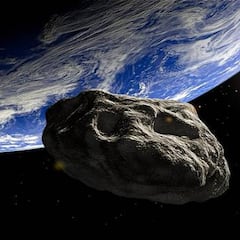Subterranean cave found on the moon: may have important value for humans
This space, which has a length of 14 tennis courts, could be ideal for the construction of a future lunar base protected from the lunar climate.

Researchers from the University of Trento (Italy) have found an underground cave on the Moon, which can be accessed from the surface making it the an ideal space to build a future lunar base. Access to it would be from an open well in the Sea of Tranquility, the plain where astronauts Neil Armstrong and Buzz Aldrin first set foot on the Moon.
The depth of this cave can insulate against extreme lunar weather
According to NASA, the well in the Sea of Tranquility (the deepest on the Moon) leads to a cave 45 meters wide and 80 meters long, which would be roughly equivalent to 14 tennis courts. As for its depth, it is about 150 meters below the surface. Some researchers claim that these features could serve as shelters for future explorers against the lunar climate, solar radiation and micrometeorites.
The pits on the Moon were discovered more than a decade ago and many of them are believed to be skylights that connect to underground caves, such as lava tubes. The images have been taken by NASA’s Lunar Reconnaissance Orbiter (LRO) and it was not entirely known whether the pit was closed or accessible, as it was covered in rocks up to ten meters wide.
The rocks found inside can provide information about the history of the Moon
In addition, researchers are interested in studying the rocks found inside the caves, since from these may provide information about the formation of the Moon and its volcanic history. These caves may also contain ice, essential for lunar missions and long-term colonization. In total, at least 200 pits have been discovered, many of them found in lava fields.
Space agencies are currently evaluating the structural stability of the caves and how to reinforce their walls and ceilings for the future return of humans to the Moon. “Lunar cave systems have been proposed as great places to site future crewed bases,” said Katherine Joy, professor of Earth Sciences at the University of Manchester. “The thick cave ceiling of rock is ideal to protect people and infrastructure from the wildly varying day-night lunar surface temperature variations and to block high energy radiation which bathes the lunar surface
Related stories
For now, the researchers say that access would be very challenging, since you have to go down more than 300 feet to reach the bottom. Additionally, the start of the shafts have very steep slopes made of loose debris.
There is the risk that any movement will cause small avalanches that put the lives of those who descend or already below at risk. This means that prior creation of a solid infrastructure will be necessary.


Complete your personal details to comment